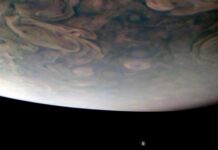University of New Hampshire to Develop Solar Wind Plasma Sensors for NOAA’s Space Weather Initiative
The University of New Hampshire (UNH) in Durham has been awarded a significant contract by NASA to develop advanced Solar Wind Plasma Sensors as a part of the Lagrange 1 Series project. This initiative is an integral component of the National Oceanic and Atmospheric Administration’s (NOAA) Space Weather Next Program, which aims to enhance our understanding of space weather phenomena and their potential impacts on Earth.
Overview of the Contract
The contract, structured as a cost-plus-no-fee agreement, has an estimated value of approximately $24.3 million. It entails the creation of two sophisticated sensors designed to study the Sun’s continuous outpouring of solar wind. This scientific endeavor will provide crucial data to support national efforts in understanding space weather, which includes predicting and mitigating disruptions caused by solar storms—such as those affecting radio communications and GPS systems.
The contract outlines a performance period starting on Thursday, October 24, and spanning approximately nine years. This timeline extends 15 months beyond the launch date of the second instrument. The project will be carried out at UNH’s facilities in Durham, New Hampshire, and also involves collaboration with the Johns Hopkins Applied Physics Laboratory in Laurel, Maryland, a major subcontractor in this venture.
Responsibilities and Tasks
As part of this contract, the University of New Hampshire is tasked with several critical responsibilities, including:
- Designing and analyzing the sensors
- Developing and fabricating the instruments
- Integrating and testing the sensors
- Verifying and evaluating sensor performance
- Supporting the launch preparations
- Supplying and maintaining ground support equipment
- Assisting with post-launch mission operations at the NOAA Satellite Operations Facility located in Suitland, Maryland
The Role of Solar Wind Plasma Sensors
The Solar Wind Plasma Sensors are designed to measure the solar wind, which is a stream of charged particles emitted by the Sun at supersonic speeds. These sensors will gather data that will be instrumental for NOAA’s Space Weather Prediction Center, which is responsible for issuing forecasts, warnings, and alerts to mitigate the impacts of space weather on Earth.
The sensors will specifically focus on characterizing several key solar wind phenomena, including:
- Coronal mass ejections (CMEs): Massive bursts of solar wind and magnetic fields rising above the solar corona
- Corotating interaction regions: Areas of enhanced solar wind density and pressure
- Interplanetary shocks: Disturbances in the solar wind that propagate through space
- High-speed flows associated with coronal holes: Regions on the Sun where magnetic fields open into space, allowing solar wind to escape
Moreover, the sensors will measure critical parameters such as bulk ion velocity, ion temperature, and density, as well as derived dynamic pressure. These measurements are vital for understanding the solar wind’s influence on the Earth’s magnetosphere and ionosphere, which can affect satellites, power grids, and communication systems.
Collaborative Efforts
The L1 Series project is a collaborative effort spearheaded by NASA and NOAA. NOAA is the primary program owner, responsible for funding, managing operations, and disseminating data products to users. NASA, along with its commercial partners, is tasked with the development, construction, and launching of the instruments and spacecraft on NOAA’s behalf.
Significance of the Project
The development of these Solar Wind Plasma Sensors is a pivotal step in advancing our understanding of space weather. By improving our ability to forecast space weather events, this project will enhance our capacity to protect various technological infrastructure on Earth from potential disruptions.
Good to Know: The Importance of Space Weather Research
Space weather research is crucial because it helps us anticipate and mitigate the effects of solar activity on Earth’s environment and technological systems. Solar storms, resulting from solar wind interactions with Earth’s magnetic field, can cause geomagnetic storms that disrupt power grids, satellite operations, and communication networks. Understanding these phenomena allows scientists and engineers to develop strategies to protect critical infrastructure and ensure the reliability of essential services.
Reference and Further Reading
For more information about NASA and its various programs, please visit the official NASA website: https://www.nasa.gov.
This comprehensive project underscores the importance of scientific collaboration and innovation in addressing the challenges posed by space weather. As the University of New Hampshire embarks on this ambitious endeavor, the insights gained from the Solar Wind Plasma Sensors will contribute significantly to safeguarding our planet’s technological assets from the unpredictable nature of space weather.
For more Information, Refer to this article.



































